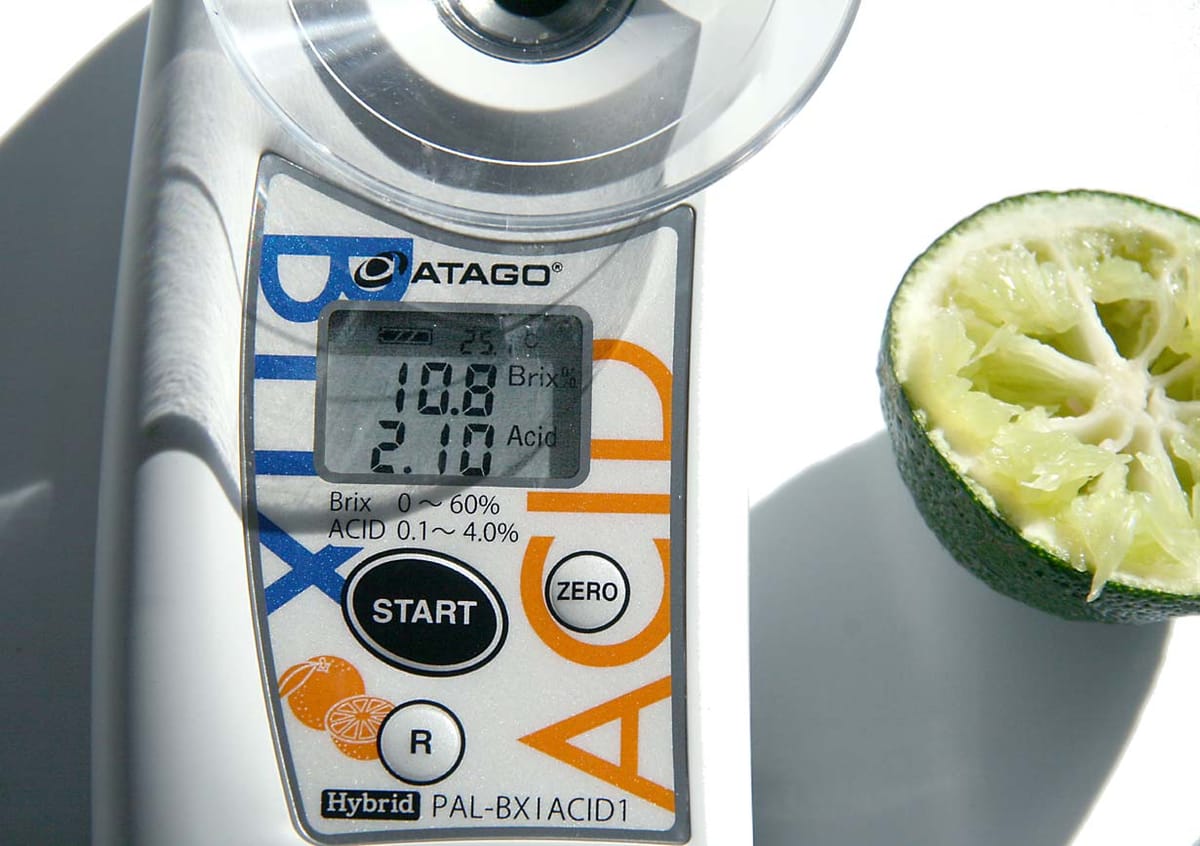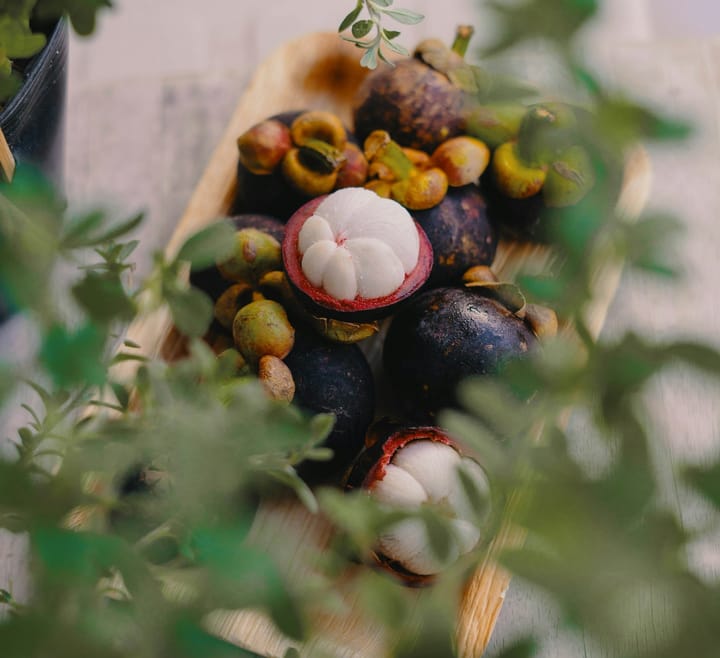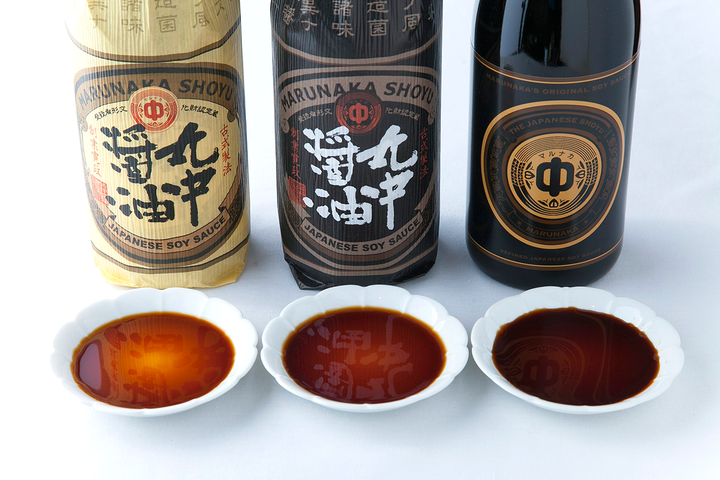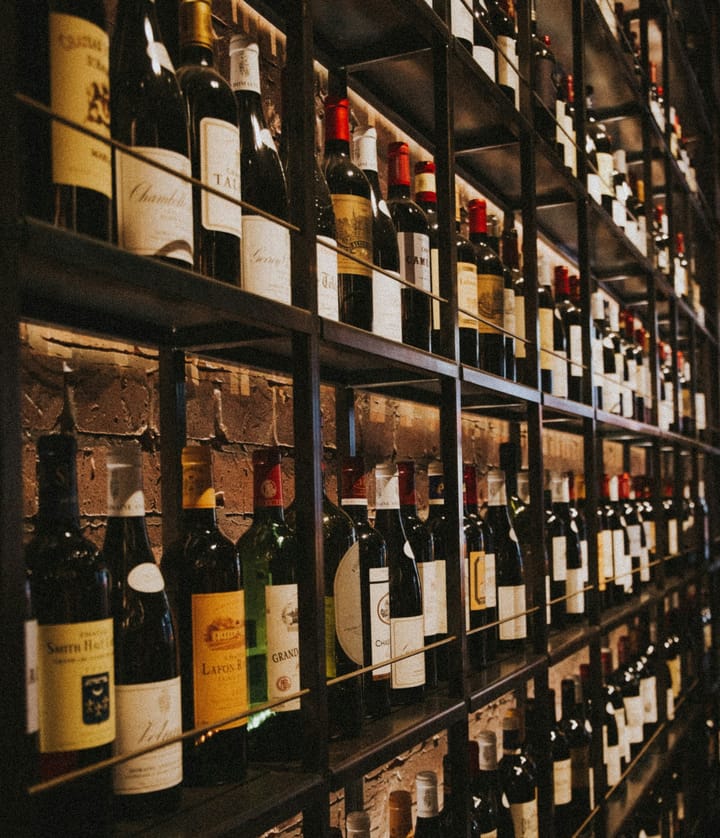Brix Scale: Complete Guide for Measuring Food Quality & Sweetness
The Brix scale (°Bx) revolutionizes how we measure sweetness in food and drinks. By quantifying sugar content in solutions, this essential tool helps producers perfect everything from luxury fruits to premium beverages, setting the standard for quality worldwide.

In the sophisticated world of food science and agriculture, the Brix scale stands as a cornerstone of quality measurement.
This comprehensive measurement system, developed by German scientist Adolf Ferdinand Wenceslaus Brix in the 19th century, has evolved from a simple sugar measurement tool into an indispensable standard across multiple industries.
Let's explore the depth and breadth of this fascinating measurement system.
The Science Behind Brix Measurements
At its most fundamental level, the Brix scale measures dissolved solids in a water-based solution, with one degree Brix (°Bx) equaling exactly one gram of sucrose in 100 grams of solution at 20°C (68°F).
While sugar content is the primary focus, the scale also detects other dissolved solids like minerals and acids, providing a comprehensive picture of a product's composition.
Modern measurement relies on refractometers, sophisticated instruments that measure how light bends (refracts) when passing through a solution.
Digital refractometers have become the industry standard, offering precision within ±0.1-0.2°Bx and providing instant readings.
These devices often include temperature compensation features, ensuring accuracy across varying conditions.
Premium Fruits and Luxury Agriculture
The world of luxury fruits provides some of the most striking examples of Brix measurement importance.
The legendary Yubari King Melon from Hokkaido, Japan, represents the pinnacle of controlled agriculture. These muskmelons, which have commanded prices exceeding $20,000 per pair at auction, must achieve Brix readings over 13%, with exceptional specimens reaching 19°Bx.

This extraordinary sweetness level results from meticulous cultivation practices, including precise soil mineral management, carefully controlled watering schedules, and strict temperature regulation.
Similarly, the Shizuoka Crown Melon must reach a minimum of 15°Bx to qualify for its highest grade classification.
Farmers monitor these melons throughout their growth cycle, often employing non-destructive testing methods to preserve their value while ensuring optimal sugar development.
Other premium fruits showcase equally impressive Brix standards:
Sekai Ichi Apples require a minimum of 13°Bx for premium grade classification, significantly higher than conventional apples.
These Japanese apples demonstrate how careful cultivation can produce exceptionally sweet fruit while maintaining large size and perfect appearance.
Dekopon citrus (marketed as Sumo Citrus internationally) consistently achieves 13-14°Bx, setting it apart from standard oranges that typically measure 9-11°Bx.
This higher sugar content, balanced with characteristic acidity, justifies their premium market position.
Wine and Beverage Industry Applications
In viticulture, Brix measurements play a crucial role in determining optimal harvest timing.
Different wine styles require specific sugar levels for successful fermentation.
Champagne production demands grapes at 17-20°Bx, ensuring proper balance for sparkling wine production.
Meanwhile, full-bodied red wines often require Cabernet Sauvignon grapes at 24-26°Bx to achieve desired alcohol levels and flavor complexity.
Premium craft beverages also rely heavily on Brix measurements. Craft sodas typically target 8-10°Bx, creating sophisticated flavor profiles that contrast with mass-market sodas exceeding 11°Bx.
This difference reflects growing consumer preference for nuanced, less sweet flavor profiles.
Commercial and Industrial Applications
The maple syrup industry demonstrates the precision required in commercial applications.
Regulations in both the United States and Canada mandate that pure maple syrup must measure exactly 66.9°Bx.
This exacting standard ensures consistent texture, proper preservation, and the characteristic maple flavor consumers expect.
In coffee production, specialty grade coffee cherries should measure 18-22°Bx at harvest, indicating optimal ripeness for complex flavor development.
This measurement helps producers maximize the quality potential of their beans during processing.
Tomato production provides another interesting application, with premium varieties maintaining 6-8°Bx.
This higher sugar content correlates with increased concentrations of flavor compounds, particularly those contributing to umami taste characteristics.
Environmental Factors and Measurement Conditions
Temperature significantly impacts Brix readings, necessitating standardization at 20°C.
Modern digital refractometers automatically compensate for temperature variations, but traditional instruments require manual adjustments.
Seasonal variations also influence Brix levels, with late-harvest fruits typically showing higher readings due to natural dehydration and continued sugar development.
Innovation and Future Developments
Recent technological advances have revolutionized Brix measurement. Non-destructive testing methods using near-infrared spectroscopy allow producers to measure sugar content without damaging valuable produce.
Artificial intelligence and machine learning systems now help predict optimal harvest times based on historical Brix data and environmental conditions.
Quality Control and Standards
In food manufacturing, Brix measurements serve as critical quality control checkpoints.
For preserves and jams, maintaining specific Brix levels (typically 65-68°Bx) ensures proper preservation, gel formation, and consistent sweetness across production batches.
Japanese "Skyberry" strawberries, for example, are a verified premium variety that typically achieve Brix readings of 10-13°Bx. These are documented in agricultural research and are known for their exceptional sweetness.
Similarly, the Japanese "Benihoppe" strawberry variety consistently reaches 9-11°Bx when grown under controlled conditions. These measurements are well-documented in horticultural literature.
Understanding the Brix scale provides insight into the scientific precision behind food quality assessment.
From luxury fruit production to industrial food manufacturing, this measurement system continues to evolve while maintaining its fundamental importance in ensuring product quality and consistency.
As consumer preferences trend toward higher-quality products with more sophisticated flavor profiles, the role of precise Brix measurement becomes increasingly crucial in meeting these elevated expectations.
Through this comprehensive understanding of the Brix scale, producers, processors, and consumers can better appreciate the science behind food quality and the precision required to create premium agricultural products.


